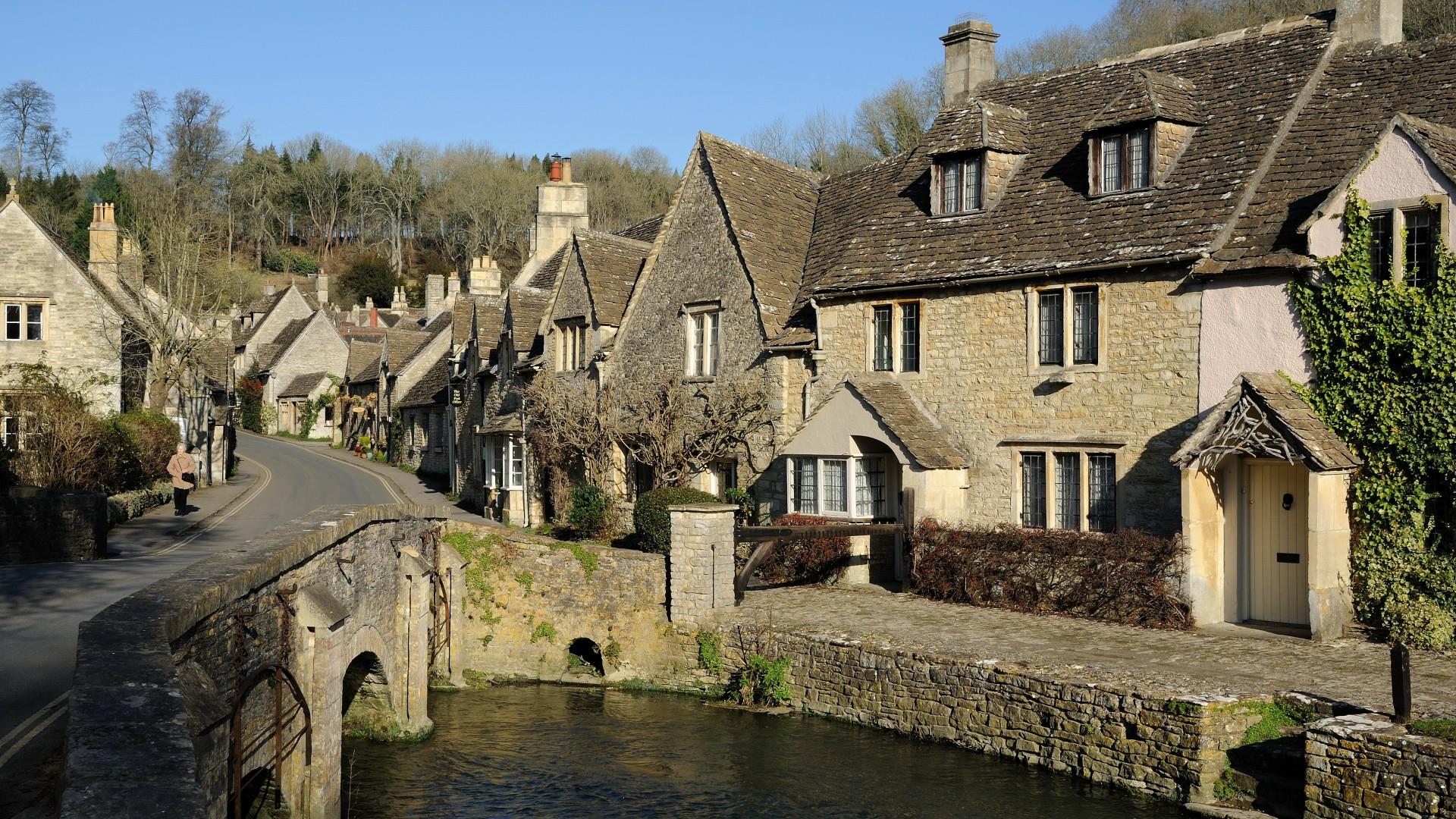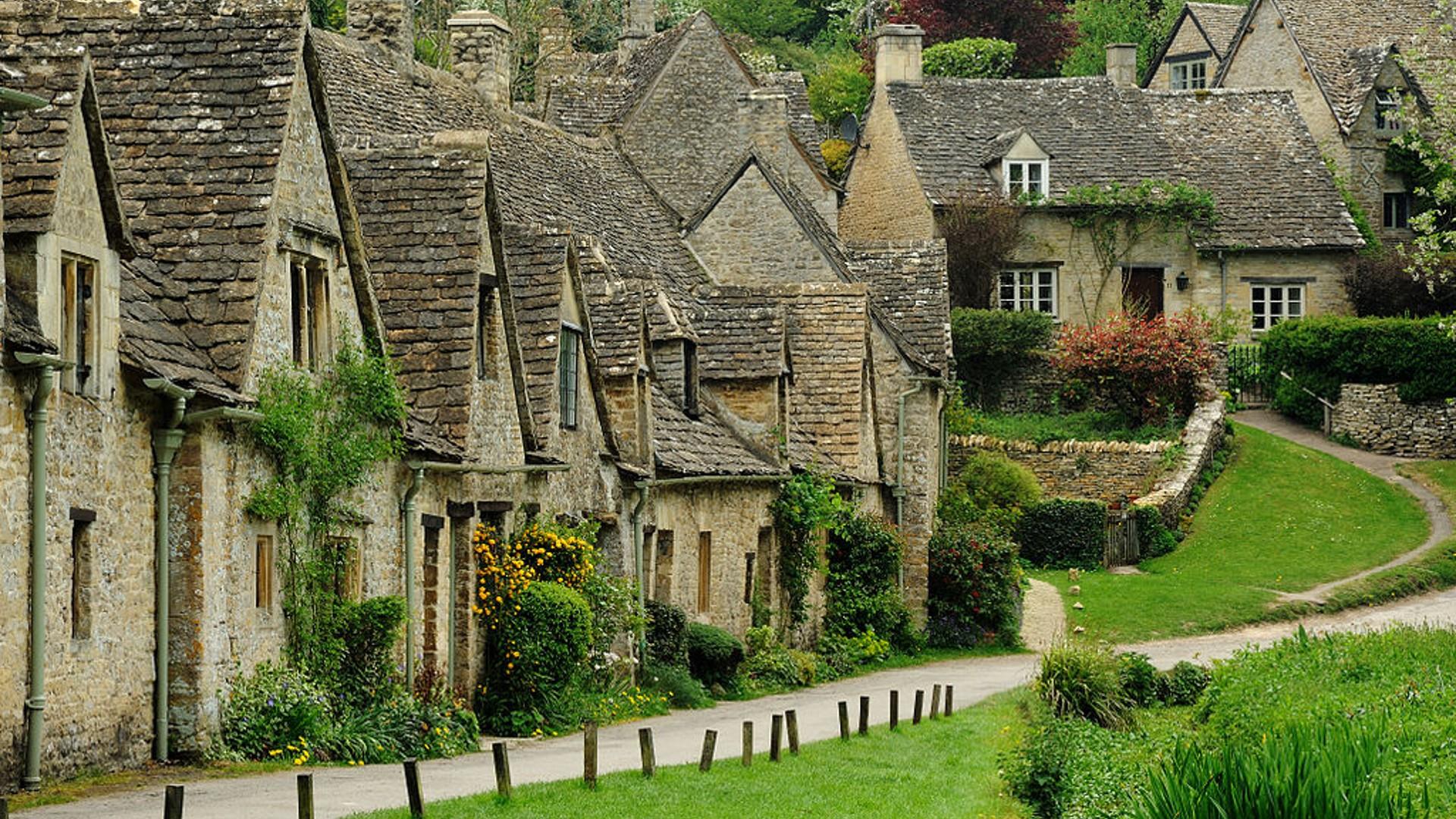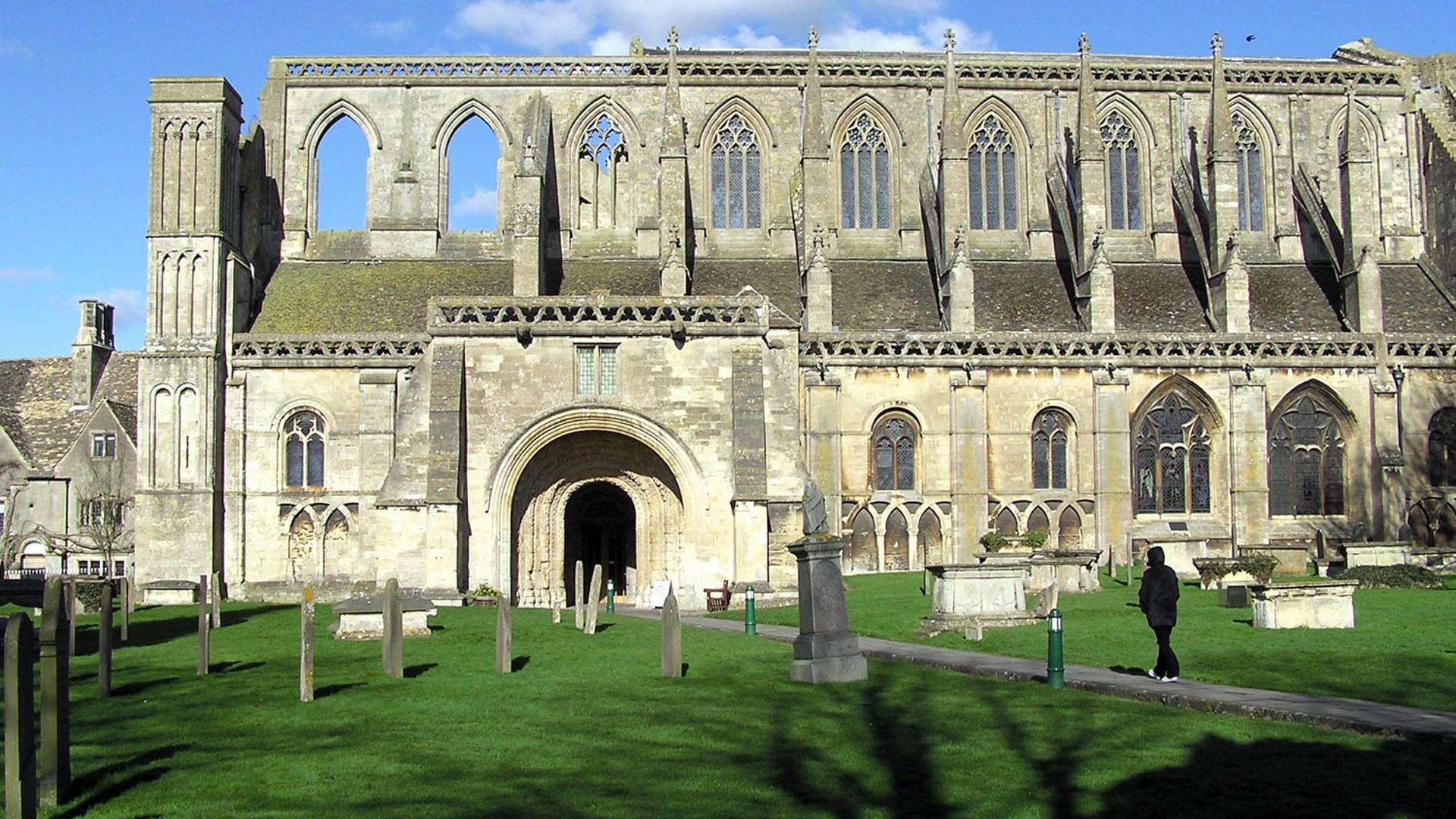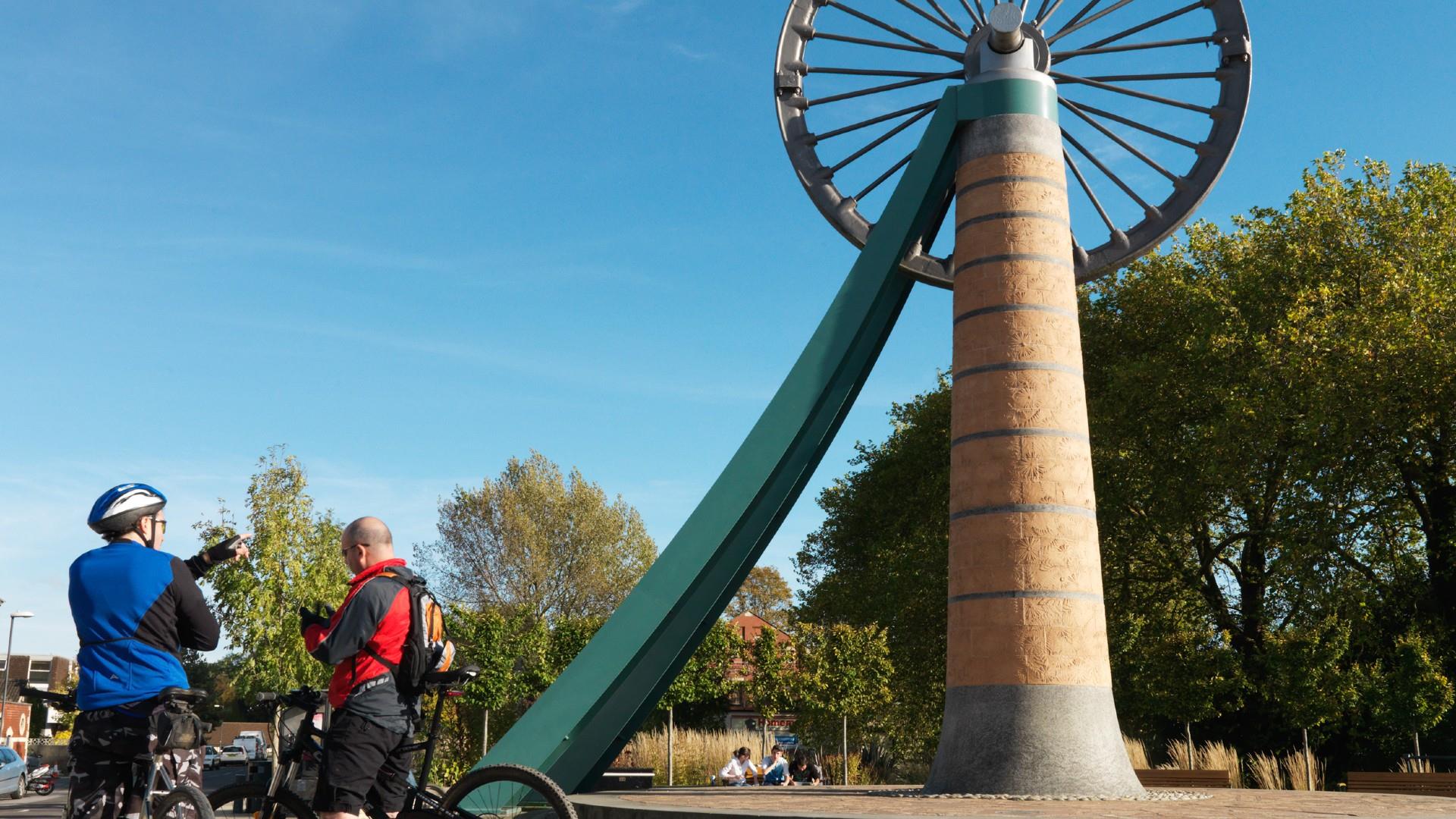Towns and Villages
Bath is situated among rolling hills in the south west of England, surrounded by lush countryside dotted with historic market towns and vibrant villages. Make time to explore beyond the city centre and you will be rewarded with some of the UK’s most beautiful villages, plenty of historic sites and local independent shopping. Why not extend your stay and explore beyond Bath?
North East Somerset
Nestled between Bath and Bristol, Keynsham is a pretty little town which has plenty to offer visitors and day trippers. A market town since medieval times, today there is a very popular market on the second Saturday of each month where you can buy a wide range of local produce. The area also benefits from an excellent network of walking and cycling routes, including the Monarch’s Way, the River Avon Trail and the Bristol and Bath Railway path, as well as the nearby family favourite Avon Valley Adventure Park.
Also sitting alongside the Bristol and Bath Railway Path is the picturesque riverside village of Saltford, which offers several traditional pubs, and a wonderful rural setting ideal for exploring the countryside - be sure to look out for woodpeckers, cormorants, kingfishers and herons.
Take a short drive out of Bath for a lovely rural ramble in the Chew Valley. Discover Blagdon Lake, or go strawberry picking in summer at a Pick Your Own farm. Visit in August and you'll be in time for Valley Fest, a family-friendly festival celebrating music, organic food and farming in an awe-inspiring location overlooking Chew Valley lake.
Venturing south west of Bath, Radstock is one of the best preserved former coal-mining towns in England. The Radstock Museum is housed in the town's former market hall. It has a fascinating range of exhibits which offer an insight into north-east Somerset life since the nineteenth century. Running into the town are two routes for cyclists - the local Greenway and a section of the national cycle network, which runs from Bath through Radstock and onto Frome and the South Coast.
Just down the road from Radstock, you will find Midsomer Norton. Situated within the very attractive rural area between Bath and the Mendip Hills, the town has been a traditional market town for centuries. On the first Saturday of every month Midsomer Norton has a Farmers' Market in the Methodist Church on the High Street. Here you can find meats, fish, fruits and vegetables, local cheeses, organic quiches and salads and herbs. On a sunny day it is lovely to sit by the River Somer, which runs through the centre of the town, and just watch the world go by.
Somerset
To the south of Bath lies the beautiful riverside village of Freshford, situated in the Avon Valley. Stop off for a traditional pub lunch at The Inn at Freshford, and explore the stunning scenery along the River Avon. Don’t miss the nearby Iford Manor Gardens, and award-winning Grade I listed garden, tucked away at the bottom of a tranquil valley.
Further south sits the historic market town of Frome, built on steep hills with cobbled streets. Take a walk around and discover parts of the Medieval street pattern, including Cheap Street which has a stream running along its length. Today Frome is a centre for arts and crafts with a number of galleries and contemporary craft centre and a nationally recognised annual ten day Festival in early July. Catherine Hill has become known for The Frome Independent, an award-winning, destination street market with a difference. On the first Sunday of each month (March to November) the market showcases the best independent craftspeople, designers, makers, producers and traders in the South West.
Discover the buzz of Bruton, a small Somerset town and hipster retreat. It’s in a picturesque spot where ancient stepping stones cross over the River Brue, and the fourteenth-century church sits at the foot of the surrounding wooded hills. Hauser & Wirth, a destination for art, architecture and immersion in the rural landscape, is on the edge of Bruton, at Durslade Farm. A pioneering world-class gallery and arts centre, it has a dedication to contemporary creative pieces. The small town is also home to several well-regarded restaurants, independent shops and boutique hotels.
The medieval city of Wells is the smallest city in England, yet boasts an impressive and statuesque Cathedral whose famous clock is the oldest surviving original of its kind in the world! The medieval moated Bishop's Palace, home to the Bishop of Bath and Wells, and the resident swans, for over 800 years, is surrounded by 14 acres of stunning gardens, so there is plenty to see.
Situated on the southern edge of the Mendip Hills, Cheddar is a large village famous throughout the world as the origin of Cheddar Cheese, produced here since the twelfth century. Reaching up to 500 feet in places, Cheddar Gorge, on the northern edge of the village, is the largest gorge in the country and includes several show caves, including Gough's Cave which contains the largest underground river system in Britain. An Area of Outstanding Natural Beauty, the limestone plateau is noted for its landscape beauty and wildlife.
Situated on the low-lying Somerset Levels, Glastonbury is perhaps the Mendip district's most famous town. Steeped in Christian and Pagan legends, the town is overshadowed by Glastonbury Tor, a dominant feature of the local landscape, topped by the roofless St Michael's Tower. Glastonbury is also famous for its abbey. It was the site of Edmund Ironside's coronation as King of England in 1016 and since the twelfth century has been associated with the legend of King Arthur. Today, Glastonbury is better known for its eponymous music festival, a five-day event of contemporary performing arts. The largest green-field festival in the world, it is now attended by more than 175,000 people.
Wiltshire
To the east of Bath in Wiltshire, the dynamic market town of Chippenham offers a unique combination of old and new, with historic architectural gems and modern shopping centres. Its nearness to some of the country's greatest houses and historic villages makes this town ideal for visiting.
Eight miles southeast of Bath and set in the Avon Valley, Bradford-on-Avon is a rare combination of river, canal and architecture of true character – from tiny weaver’s cottages and ancient alleyways to grand clothiers’ houses and public buildings. Whilst in the town, visit the fourteenth century Tithe Barn, orginally belonging to the richest nunnery in England. It’s not all about history though – there’s a great choice of places to eat and drink, from canal-side pubs to award-winning restaurants, and cafés where you can savour local produce including cheeses, ice creams, chutneys and ales.
Medieval Salisbury lies at the confluence of five rivers and the awe-inspiring sight of the Cathedral, rising up from the water-meadows, has been described as ‘Britain’s Best View’ by readers of Country Life magazine. Salisbury Cathedral offers one superlative after another, from the tallest spire in Britain and the oldest working clock in Europe to the world’s best preserved original Magna Carta. There’s plenty more to keep you entertained too, with shopping, museums and restaurants, plus the thriving Charter Market.
Sitting just north of Salisbury is the World Heritage Site of Stonehenge, one of the most iconic prehistoric monuments in Europe. Come and visit to gaze upon this man-made wonder and see if you can unlock its mystery!
The medieval village of Lacock in Wiltshire, with its timber-framed cottages and stunning abbey, has to be one of the prettiest villages in England, and you might just think that you have seen it somewhere before. Its picturesque streets, historic cottages and century inns make it a firm favourite with film and TV producers. The village’s most famous appearances include Downton Abbey, the BBC’s Pride and Prejudice and Cranford, and the Harry Potter films. Lacock Abbey houses the Fox Talbot Museum, which celebrates the life and work of William Henry Fox Talbot, one of the founders of modern photographic processes.
Recognised as a World Heritage Site for its outstanding Neolithic and Bronze Age landscape, Avebury is a place not to be missed. Built roughly between 2850 BC and 2200 BC, and now managed by The National Trust, it is the largest stone circle in the world, with two inner circles and a huge henge ditch. The village itself offers a pub, shops and Avebury Manor with its surrounding gardens.
Just 10 miles from Bath and on the fringe of the Cotswolds, you will find the historic market town of Corsham. Packed with independent shops and restaurants, peacocks roam freely from their home at Corsham Court set in Capability Brown designed gardens. The BBC’s hit drama Poldark was filmed in the High Street, which also hosts a regular street market boasting local produce.
The Cotswolds
An Area of Outstanding Natural Beauty, the Cotswolds extends from Bath at its southern tip to Stratford upon Avon in the north, covering much of Gloucestershire as well as parts of Wiltshire, North East Somerset, and Oxfordshire. The well-trodden path of the Cotswold Way is over 100 miles of scenic country walking on the western edge of the Cotswold escarpment between Bath and Chipping Campden. With picturesque villages and lively market towns dotted across the rolling countryside, rich history and cosy pubs to enjoy, the Cotswolds is a fantastic area to explore while based in Bath.
Tetbury is a Cotswold town of great architectural interest. It remains substantially the same as it was in the 16th and 17th centuries when it reached the height of its prosperity as a wool town. Don’t miss the iconic Market House in the town centre, and explore the picturesque Chipping Steps and Gumstool Hill, which hosts the annual Woolsack Races, a tradition dating back to the 17th century. Today, Tetbury is also well known for its wonderful range of antique shops, attracting many visitors every year. You can easily spend a day or more browsing the collection of shops, then stopping for afternoon tea. Nearby Highgrove House and Westonbirt Arboretum make for excellent days out in the area.
Often named the ‘prettiest village in England', Castle Combe is a quintessential Cotswolds village, located in an Area of Outstanding Natural Beauty. You might feel as if you have been there already, as it has regularly been used as a filming location – the original Doctor Doolittle, War Horse, and others, have been filmed there. The centerpiece of Castle Combe is the medieval market cross, standing where the three principal streets of the lower village converge. For a thrilling day out, don’t miss the nearby Castle Combe Circuit for spectacular motor racing.















